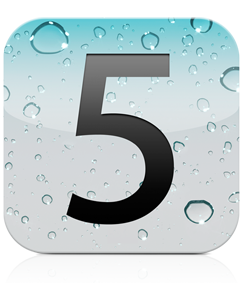I was reading the latest entry on Paul Thurrott’s Windows Phone 7 Secrets blog, and it got me thinking about the whole multitasking argument that has been taking place since Apple’s iPhone OS 4 announcement.
So first, a quick summary: since the iPhone was launched, multitasking has been next to impossible. Except for a few of Apple’s own stock Apps, it is only possible to run one App at a time. Once you hit that home button, everything goes away. In most cases, this is not a big deal. But sometimes, you just want to listen to Pandora while browsing the web.
Last year, Apple announced push notifications as one answer to the multitasking problem. For example, on phones where multitasking is allowed, you could leave a Twitter client open, and it could notify you some way when your timeline updates. As mentioned above, it wasn’t possible to do this on the iPhone. With push notifications, though, an App developer could set it up so that they would monitor your Twitter timeline, and send a notification to your phone when something changes. A bit of a roundabout method, but it gets the job done.
On Thursday, at Apple’s iPhone OS 4 reveal, they added another piece to the multitasking puzzle: task-based multitasking. Certain things, such as listening to music, getting location-based information, or talking on a VoIP call, could be done in the background while you work on another task. As you can see, this isn’t free-for-all multitasking. But, it does answer the majority of scenarios that users cite when they complain about iPhone’s lack of multitasking.
What this all leads to is Microsoft’s upcoming Windows Phone 7. This is almost a complete rewrite of the entire WIndows Mobile experience, and so I imagine that Microsoft is keeping its initial goals simple and straightforward. I would also not be surprised if Microsoft took note of Apple’s simplistic “one App only†view and decided it was Good Enough for them as well. But now that Apple is adding some form of multitasking, it has everyone declaring Windows Phone 7 as dead before it even ships.
What Paul’s article correctly points out is that Windows Phone 7 doesn’t need multitasking, because it is built around multiple tasks. Huh? Okay, let me break this down a bit. Windows Phone 7 is built around distinct “hubsâ€. There’s the picture hub, the music hub, the “I’m a social butterfly†hub – each one of these has an anchor in a certain theme, but pulls its content from many disparate sources. So, for example, Pictures not only shows you the pictures you’ve loaded onto your phone, but also dynamic content from Facebook, or Flickr. Go into your contacts hub, and it not only shows you your contacts and how to get in touch with them, but also their latest updates on Twitter, Facebook, and so on.
So the basic point is: why do you need to worry about multitasking, if everything is already right in front of you, in one hub?
Well, here’s the part that worries me. While this concept is incredibly cool, it puts the responsibility on Microsoft to keep things up to date and fresh. What the App concept buys you is that when new social networking services crop up (for example), people can write Apps on top of its APIs right away, and before you know it you’re linked in to the service.
With Microsoft’s hubs, how long will you have to wait for Microsoft to integrate a new social networking service?
Sure, Windows Phone 7 supports apps, but can you imagine how annoying it would be if you had to not only view your contacts hub, but also jump out to a third-party app, to see the complete picture?
Or even worse, what if Twitter disappears? Or Facebook? Or, more likely, what if something better comes along and everyone switches to the new service en masse? Suddenly, your contacts hub is no longer relevant because no one uses those services anymore.
How long would it take for Microsoft to add support for new services? Would they ditch older services?
Of course, we don’t have a complete picture of Windows Phone 7 yet. It might be that Microsoft will eventually allow third parties to hook into the hubs, if approved by Microsoft. That would be a nice way to make sure things stay fresh.
But this worries me a bit. The concept is amazing cool, and I think is a much-needed reimagining of how a mobile device presents information to you. But with how quickly the internet evolves, something like this can break down quickly – and what used to be a nifty take on the multitasking issue ends up making things ten times worse.
Just my two cents.
Update: Oh, and yes, I realize that Microsoft’s solution doesn’t solve things like “listening to Pandora while browsing the webâ€, just like the iPhone used to not allow. I am sure eventually Microsoft will bridge this gap. But there is still a fundamental rethinking, which helps to downplay the need for multitasking.
Update 2: So, Paul just made a new post in response to a recent interview. In said interview, it is mentioned that eventually third parties will be able to extend hubs, but that functionality won’t make it at launch. This is obviously good news, and helps alleviate some of my concern. I still worry about the long-term evolution of how these hubs are maintained, but it’s good to see that they likely won’t stagnate.
 Question: What is a review?
Question: What is a review?